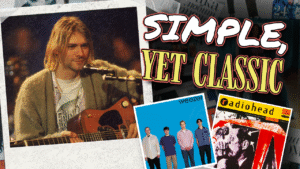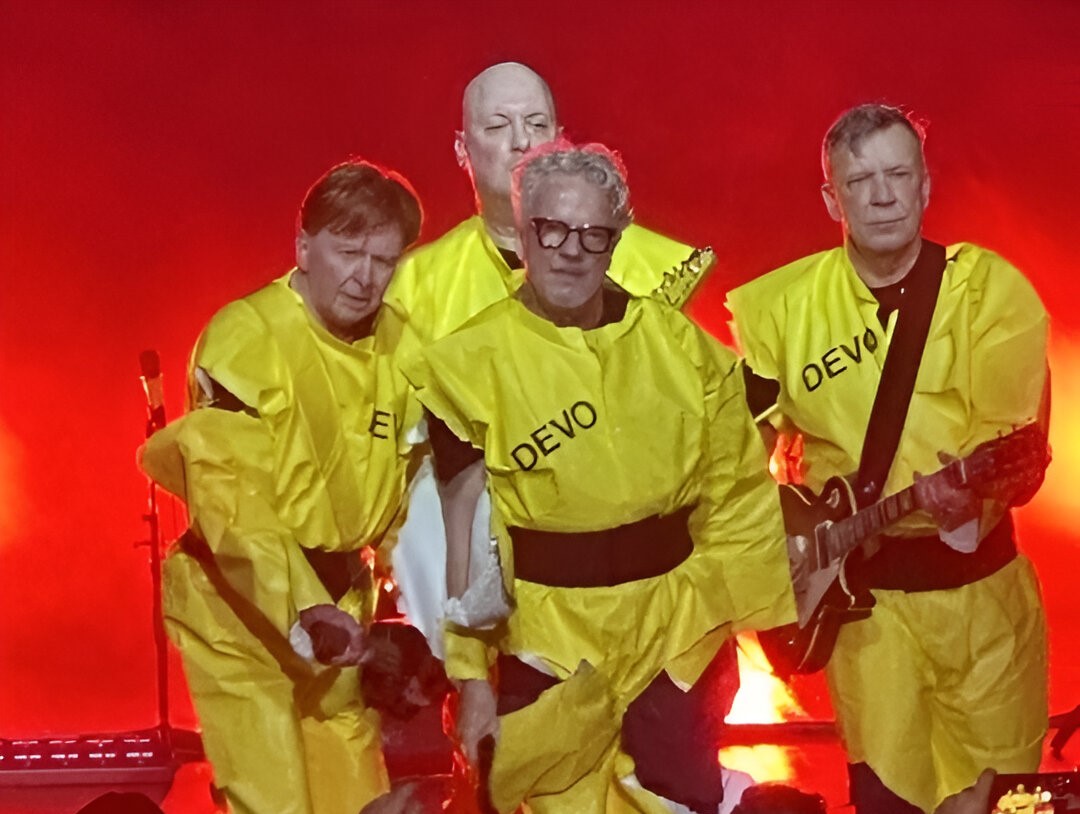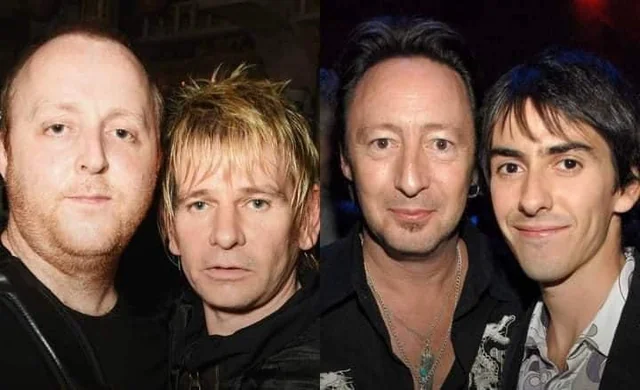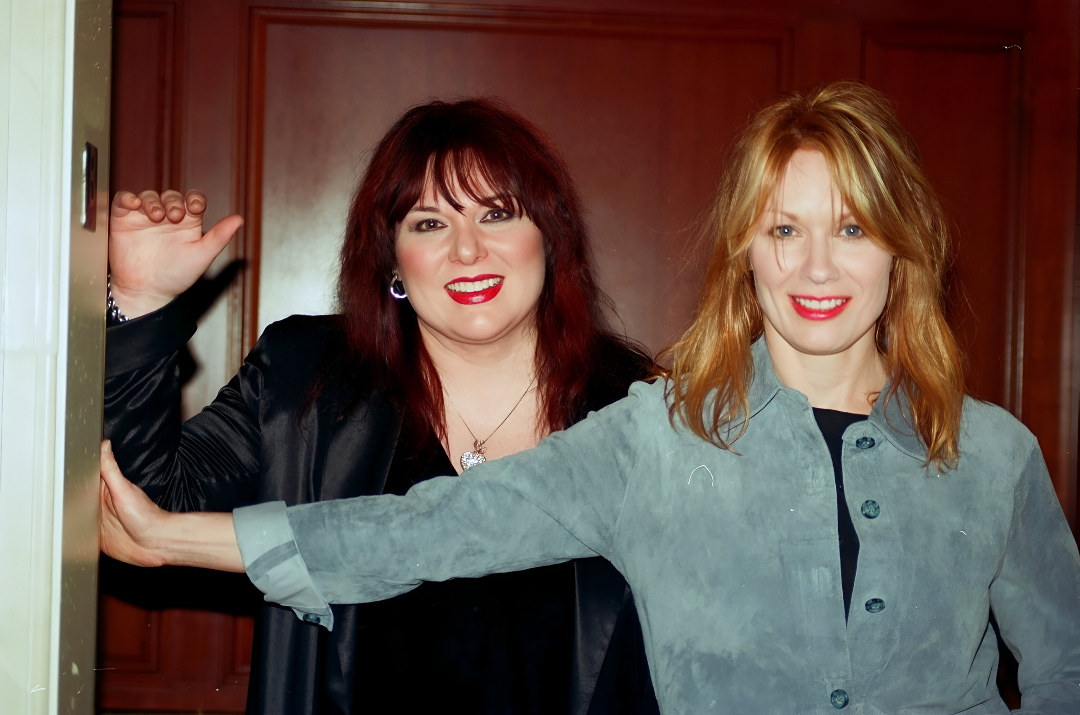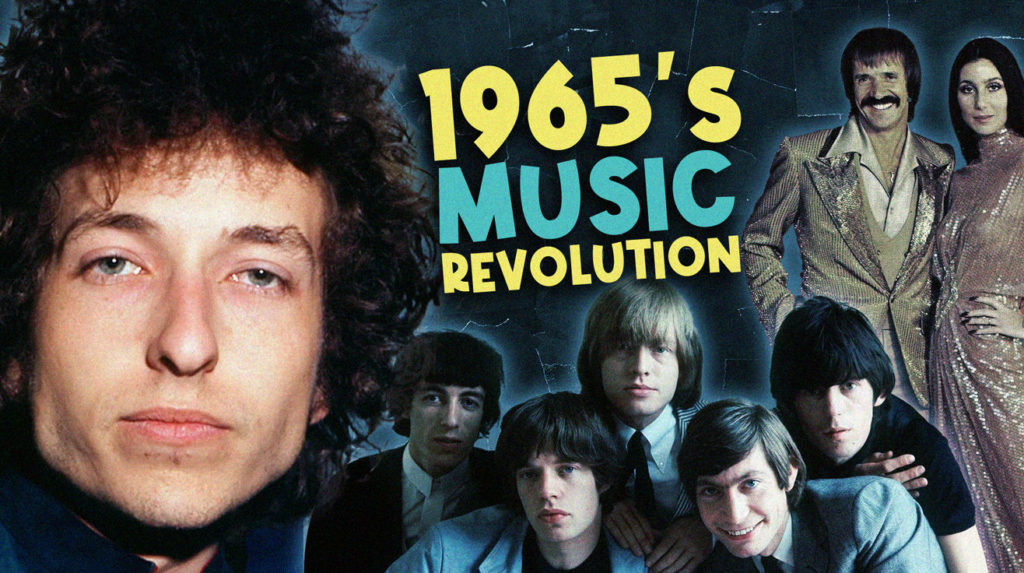
The year 1965 hit like that moment when a song’s bridge unexpectedly modulates to a key that shouldn’t work but somehow opens a trapdoor to emotional revelation. Rock, folk, and pop underwent seismic shifts that still ripple through today’s bedroom producers’ SoundCloud experiments. The British Invasion wasn’t just conquering charts—it was recoding American musical DNA in real time. Guitar feedback evolved from technical malfunction to emotional statement, while concept albums began their evolution from commercial strategy to artistic vision.
Disclaimer: Some images used for commentary and educational purposes under fair use. All rights remain with their respective owners.
The Beatles’ Early 1965 Domination
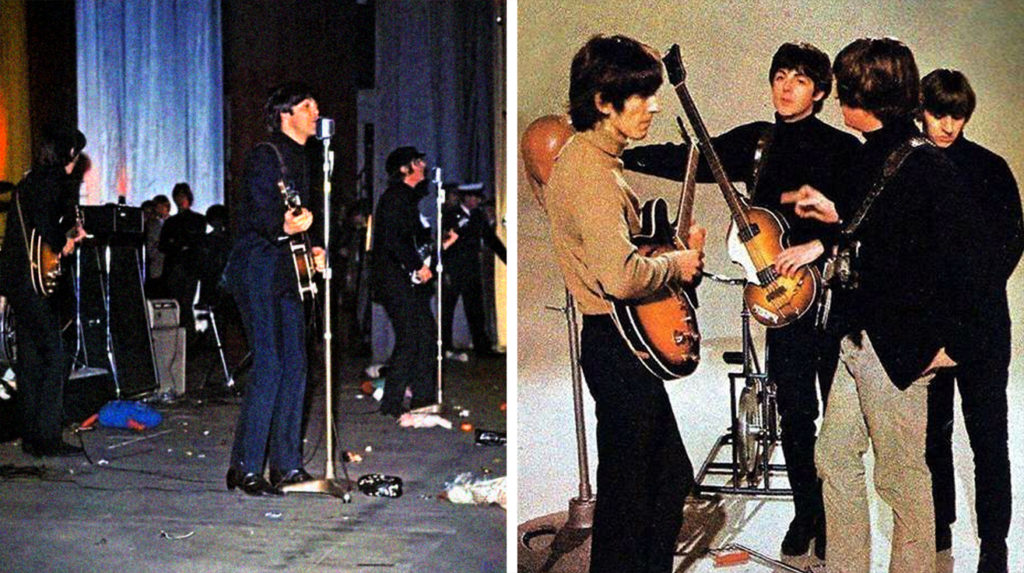
January 1965 found The Beatles wrapping their Hammersmith Odeon Christmas show—the final pages of their boy-band origin story before the plot twisted toward something weirder. These were the last moments before they’d transform from lovable moptops into sonic alchemists. Their hit “I Feel Fine” was already signaling mutation through its pioneering use of guitar feedback—one of the earliest intentional uses of this technique in popular music. The crystalline pop perfection was beginning to fracture, revealing something more interesting underneath.
The British Invasion’s Expanding Influence

British artists hijacked American charts in 1965, with estimates suggesting they held over 60% of top positions—a full-spectrum takeover that wasn’t just about quantity but mind-bending diversity. The Rolling Stones served raw blues-rock with an aftertaste of danger while Petula Clark delivered sophisticated pop that went down smooth but packed a sneaky emotional punch. Together they rewired American pop’s circuitry, soldering new connections between blues, rock, folk and pop that would never be disconnected again.
London’s Thriving Music Scene
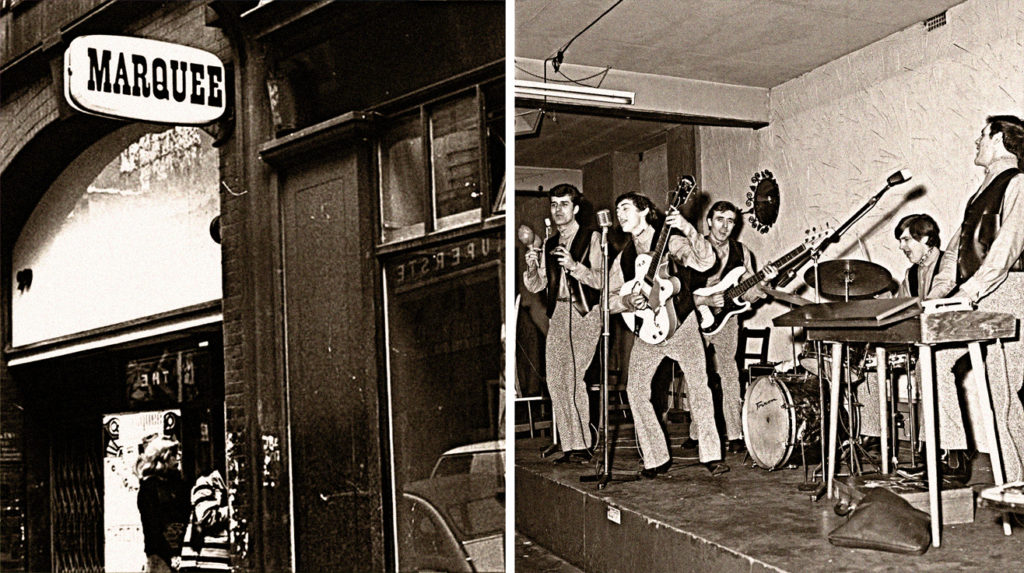
The Marquee Club functioned as London’s musical particle accelerator, smashing different talents together at high velocity and observing the resulting sonic elements. This rectangular room with its sweat-soaked walls witnessed combinations that would shape decades of sound. Each night offered different fusion experiments: The Yardbirds featuring Eric Clapton reverse-engineering American blues into something uniquely British; The Moody Blues testing early versions of what would evolve into progressive rock; Rod Stewart discovering the sandpaper textures in his vocal cords.
Van Morrison’s Early Beginnings
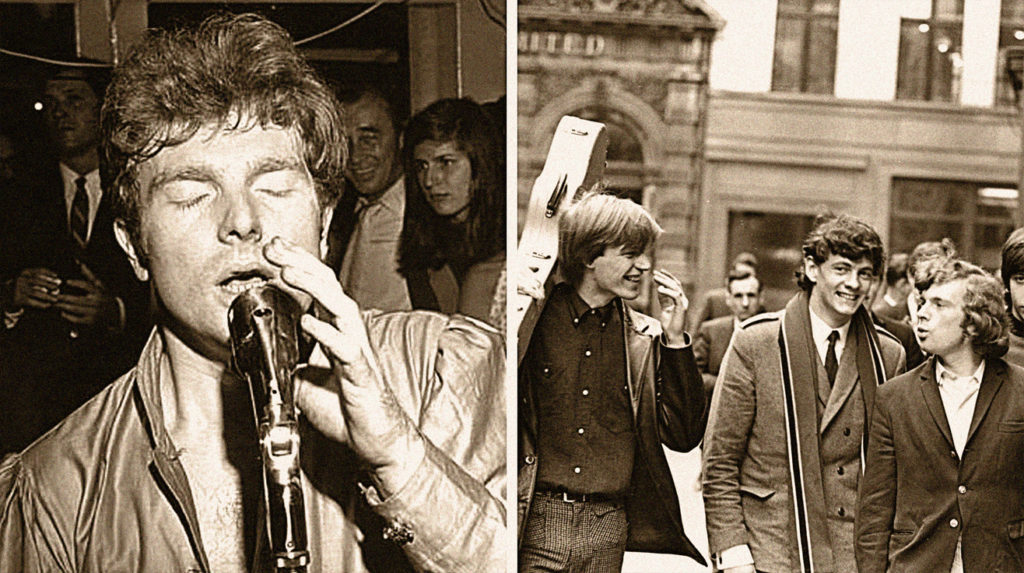
Before Van Morrison became the mystic soul poet who could make a three-chord progression sound like a spiritual revelation, he weathered the brutal bootcamp of audience rejection. His Belfast beginnings involved dodging projectiles from crowds who weren’t ready for his raw R&B approach. Morrison’s band strategically relocated to London like tech workers fleeing to more industry-friendly cities. The geographical upgrade paid off when “Here Comes the Night” connected with listeners more accustomed to soul-influenced sounds.
Innovations in Music Technology
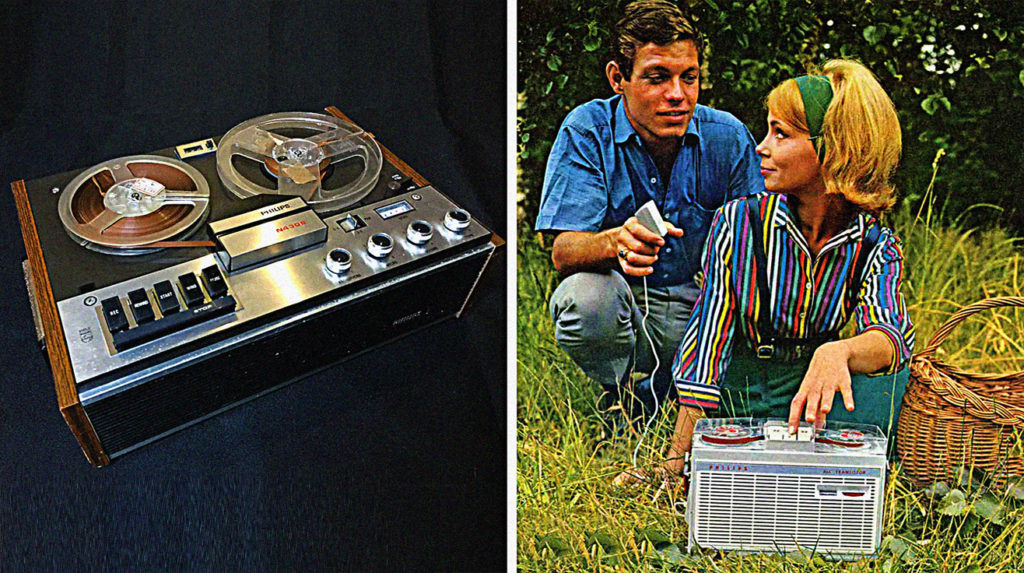
The Philips pocket tape recorder of 1965 was essentially the prehistoric ancestor of today’s smartphone voice memo app—a democratizing tool that began severing music from the studio-industrial complex. Young people could suddenly document sounds anywhere, making audio collection as personal as a diary entry. These cartridge-loaded machines were portable memory banks for a generation realizing that capturing sound could be as important as making it—foreshadowing our current era where documentation and creation have become indistinguishable twins.
Economic Optimism and Cultural Shifts

The economic vibe of 1965 created a perfect petri dish for cultural experimentation—like having your parents cover rent while you figure out your passion project. Tax cuts stimulated spending while inflation stayed at a remarkably chill 1.6%. This financial stability operated as an invisible foundation beneath the era’s creative explosion. Berry Gordy’s Motown was targeting ambitious revenue goals, reflecting the broader optimism. Young people had disposable income for records and concerts, while musicians could take artistic risks without facing immediate financial doom.
Diversity in March 1965

March 1965’s charts resembled that playlist your friend with surprisingly good taste made—the one jumping between genres with confidence instead of algorithmic calculation. The Beach Boys were translating California sunshine into intricate harmonies while British pop acts delivered infectious hooks engineered for maximum earworm potential. This diversity wasn’t just commercial coexistence but evidence of American listeners developing more sophisticated palates. Regional sounds that once would have remained local curiosities were achieving national recognition, creating a feedback loop of influence.
Bob Dylan’s Transformation

Bob Dylan’s 1965 metamorphosis wasn’t just a folk singer plugging in—it was the equivalent of an indie filmmaker suddenly directing a Marvel movie while somehow keeping their artistic integrity intact. His landmark album “Bringing It All Back Home” marked a definitive break from acoustic traditions. Even his wardrobe evolved from earnest folkie to proto-hipster, signaling through visual cues that boundaries were dissolving. Folk purists reacted with the outrage of early cryptocurrency advocates watching their underground obsession go mainstream. His controversial Newport Folk Festival electric performance in July cemented this artistic evolution.
Innovations Beyond Music

The creative energy of 1965 wasn’t just sonic—it coursed through culture like a monster energy drink mixed with cold brew. The successful Gemini 3 mission expanded possibilities in space while Motown acts engineered hit formulas with scientific precision, The Supremes achieving an unprecedented five consecutive number ones. Numerous surveys indicated overwhelming public perception of innovation permeating daily life. These parallel breakthroughs across fields created a multiplier effect where scientific and artistic progress seemed to accelerate each other.
April 1965’s Optimistic Outlook
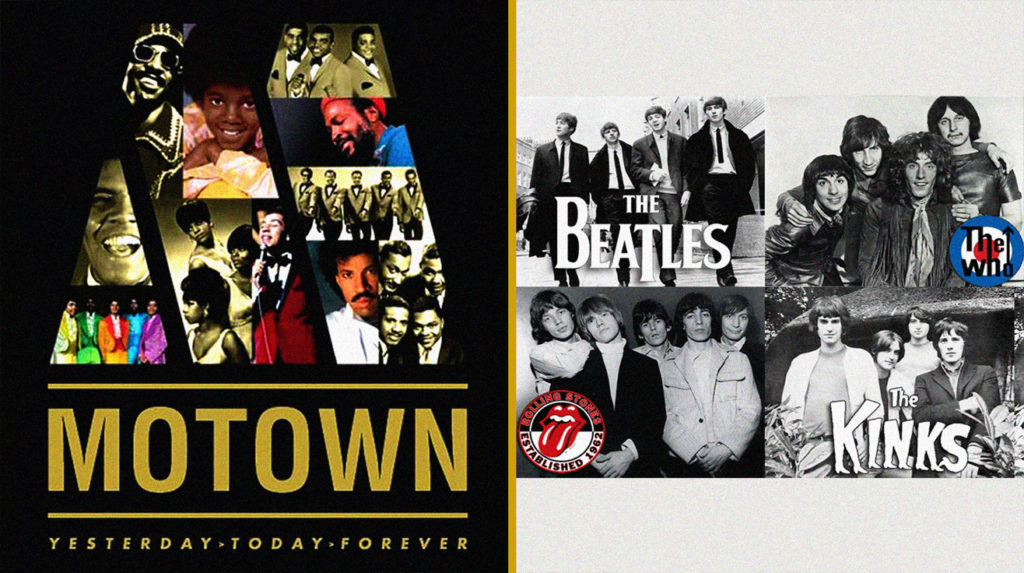
April 1965 bottled a musical optimism as potent as the dopamine hit from finding an obscure record in perfect condition at a thrift store price. Motown’s precision-engineered joy merged with California’s sunshine-infused harmonies across airwaves nationwide. British Invasion tracks dominated radio programming with the ubiquity of streaming playlist staples, their melodies becoming ambient soundtrack to American daily life. For those who experienced it, April 1965 remains a high-water mark of musical excitement—when turning on the radio felt like opening presents.
The Byrds’ Rise
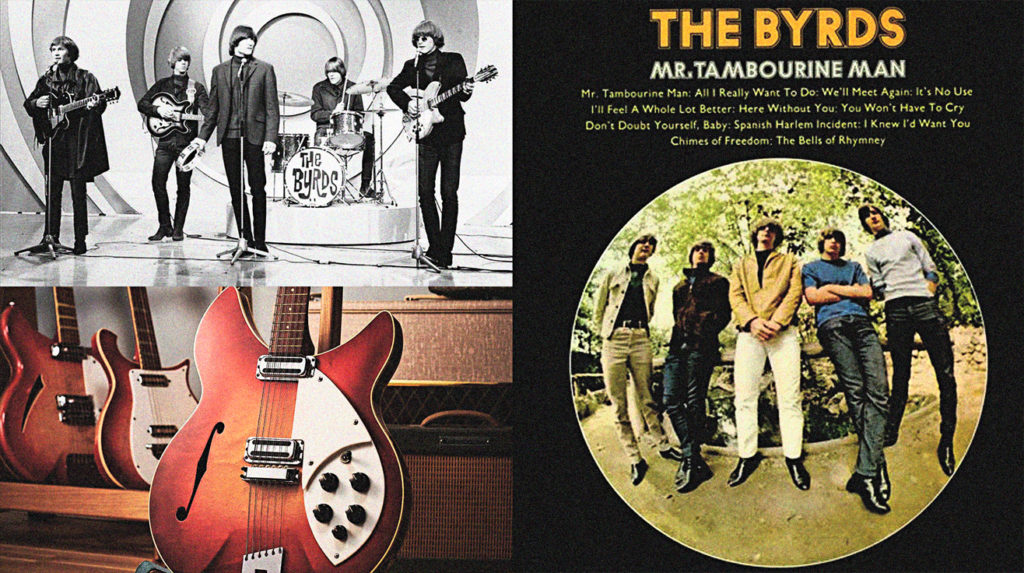
The Byrds emerged in 1965 as America’s response to the British musical occupation, wielding Roger McGuinn’s 12-string Rickenbacker like a declaration of independence. Their June album effectively established the folk-rock genre by running Dylan’s lyrical complexity through Beatles-inspired arrangements. Music historians widely confirm this album as a breakthrough moment for folk-rock. Their success demonstrated that artistic influence could flow both ways across the Atlantic, establishing a cultural conversation rather than a one-sided lecture. The Byrds created a template for countless bands seeking to combine lyrical substance with irresistible hooks.
Bob Dylan’s Newport Folk Festival Performance

July’s Newport Folk Festival captured the 1965 transformation in a single controversial moment—like that climactic scene where a film’s tension finally explodes. When Dylan appeared with a Fender Stratocaster instead of his expected acoustic guitar, the audience fractured into opposing factions with the dramatic intensity of fans debating a contentious series finale. Multiple historical accounts confirm the mixed reaction, with both cheers and vocal disapproval. After his boundary-shattering electric set, Dylan returned with an acoustic performance of “It’s All Over Now, Baby Blue”—a perfect narrative bookend.
The Beatles at Shea Stadium
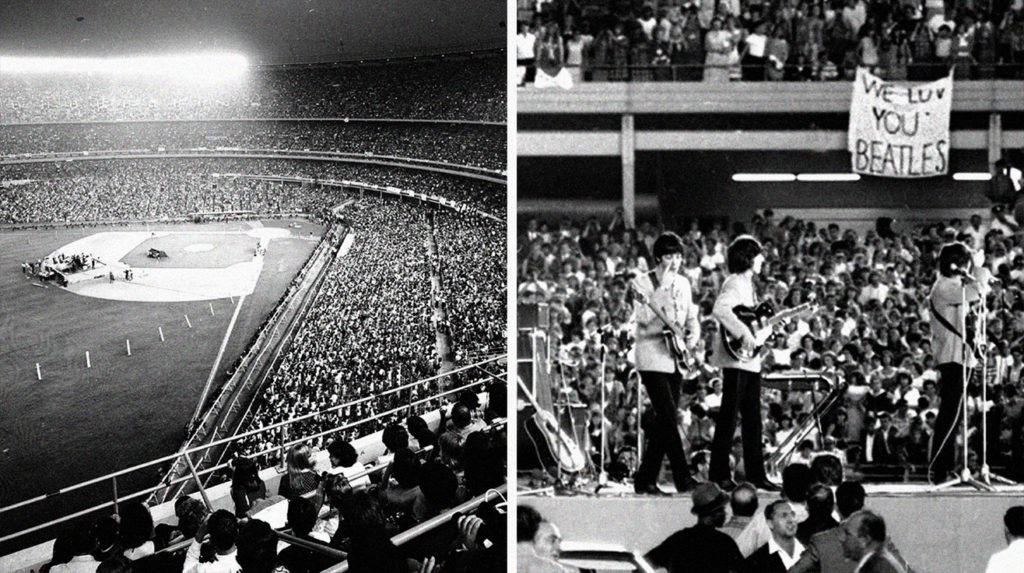
August 1965’s Shea Stadium concert didn’t just break attendance records—it rewrote the relationship between performers and audiences like a software update changing user permissions. Over 55,000 fans witnessed The Beatles essentially invent the stadium rock show, widely acknowledged as the first major stadium concert in rock history. Security struggled against enthusiasm that resembled a force of nature. Cameras captured everything for global broadcast, transforming a live performance into worldwide media event with the reach of a modern streaming premiere.
Sonny & Cher’s Summer Hit

Summer 1965 belonged to Sonny & Cher with a breakthrough hit that climbed Billboard charts with the unstoppable momentum of a viral dance challenge. Their harmonized vocals captured youthful optimism with the authenticity of those rare TikToks that feel genuinely unfiltered. Sonny Bono spoke openly in music publications about facing rejection for their distinctive fashion choices. Their rapid rise represented the increasing diversity reshaping American pop, their folk-rock sound incorporating multiple influences like an expertly curated playlist. Their success resonated with young listeners because it seemed attainable.
The Rolling Stones’ ‘Satisfaction’

The Rolling Stones delivered 1965’s definitive statement against conformity with the swagger of someone walking out of a toxic relationship without looking back. Keith Richards’ instantly recognizable guitar riff—conceived in a half-asleep state and recorded on cassette before he fell back asleep, according to well-documented accounts—became rock’s equivalent of a perfectly crafted meme format. The track functioned like a perfectly timed tweet that captures a universal feeling everyone was experiencing but couldn’t articulate. Its aggressive sound empowered listeners to question authority figures and express individuality without apology.
The Who’s ‘My Generation’
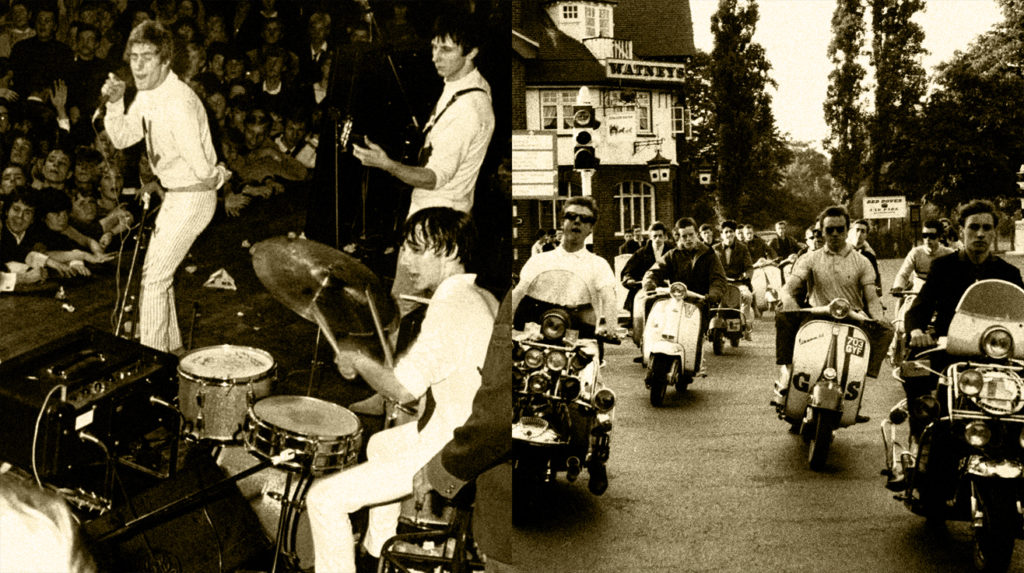
The Who captured youthful defiance with a precision that makes most teenage rebellion movies look like awkward cosplay. Roger Daltrey’s stuttering vocal delivery—initially an accident during rehearsal according to band interviews—became the perfect embodiment of frustrated communication between generations. The song addressed Britain’s mod subculture specifically while expressing universal teenage feelings. The track’s famous line about hoping to die before growing old wasn’t just shock value but genuine questioning of established life patterns—a sentiment that continues to resonate with successive generations.
The Beatles’ Ed Sullivan Farewell
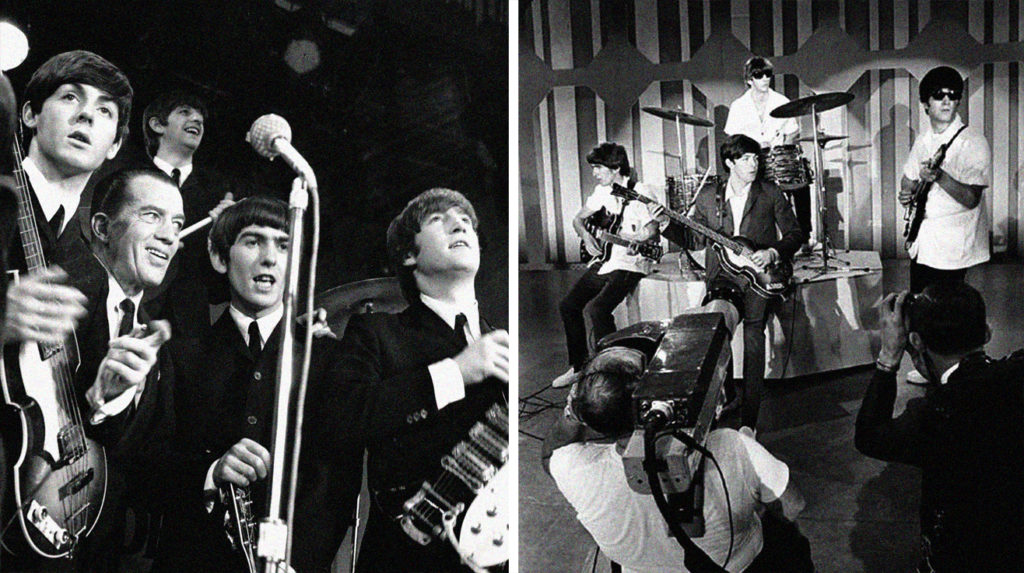
The Beatles’ September appearance on Ed Sullivan marked their pivot from performance to experimentation with the decisiveness of deleting dating apps to focus on personal growth. This pivotal decision transformed expectations for popular musicians from entertainers to artists. The band’s subsequent studio work would incorporate arrangements, instruments, and techniques impossible to reproduce live—creating a separate recorded reality. Their path from touring act to sonic researchers changed music’s trajectory by establishing the album as primary artistic statement rather than mere merchandise supporting concerts.
Ballad Hit: Yesterday

October saw the American release of a melancholy masterpiece that would become the musical equivalent of comfort food—something people return to during emotional turbulence across generations. The stark arrangement featuring just vocals and strings demonstrated that sometimes removal creates more emotional impact than addition—the sonic equivalent of a powerful black and white photograph in a world gone technicolor. The song reached number one with seeming effortlessness, establishing new possibilities for emotional vulnerability in pop music. Its universal theme of nostalgia connected across demographic boundaries.
Dylan’s Scathing Lyrics
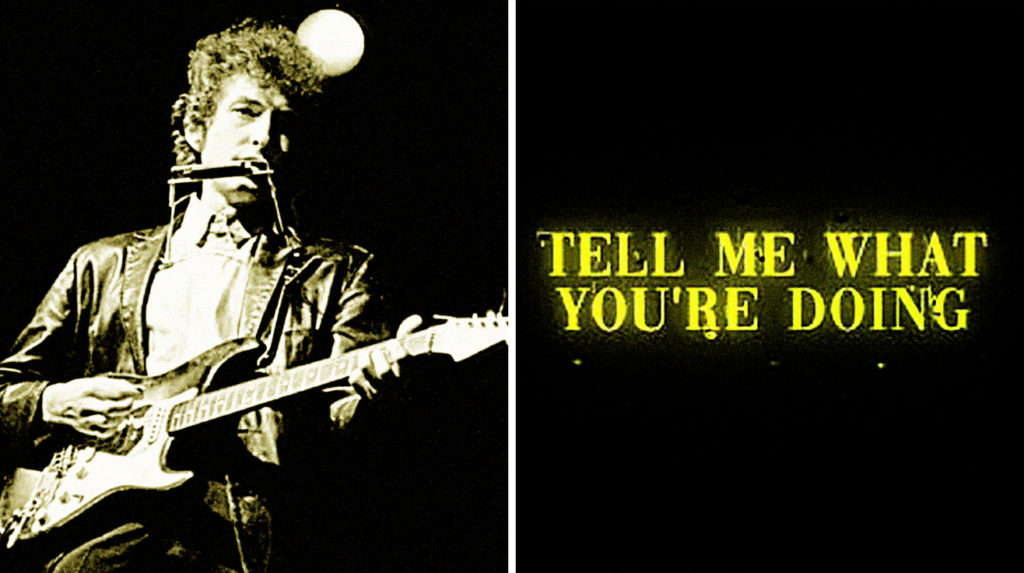
Bob Dylan delivered another October surprise with lyrics that burned bridges to his folk origins with the systematic precision of someone deleting their entire social media history before reinvention. Music journalists have noted that many traditional folk enthusiasts resisted Dylan’s evolution, clinging to acoustic purity like vinyl collectors dismissing streaming quality. His unflinching commitment to artistic growth expanded possibilities for all songwriters, demonstrating that audience expectations should be secondary to creative truth. This uncompromising track proved popular music could express complex emotional landscapes beyond romantic themes.
Rolling Stones’ Out of Our Heads

The Rolling Stones achieved creative escape velocity with their October album release, moving beyond covers toward their distinctive musical voice with the confidence of someone finally posting original content after sharing only memes. Keith Richards developed increasingly sophisticated guitar approaches that would become his signature style—immediately recognizable like a favorite filter. The album’s commercial success validated their artistic development, proving authenticity could be marketable. This collection marked their maturation from blues interpreters to innovative songwriters establishing the template for their future work.
The Rolling Stones’ ‘Get Off of My Cloud’

The Rolling Stones maintained momentum in November with another defiant anthem that set boundaries against external expectations with the finality of someone enabling Do Not Disturb mode on all their devices simultaneously. Mick Jagger delivered one of his most expressive performances, communicating frustration and determination through vocal texture as much as lyrics. The song captured generational tension defining mid-60s youth culture with documentary precision. Its success demonstrated how effectively the Stones had developed their voice—instantly recognizable yet constantly evolving.
The Beatles’ ‘Rubber Soul’
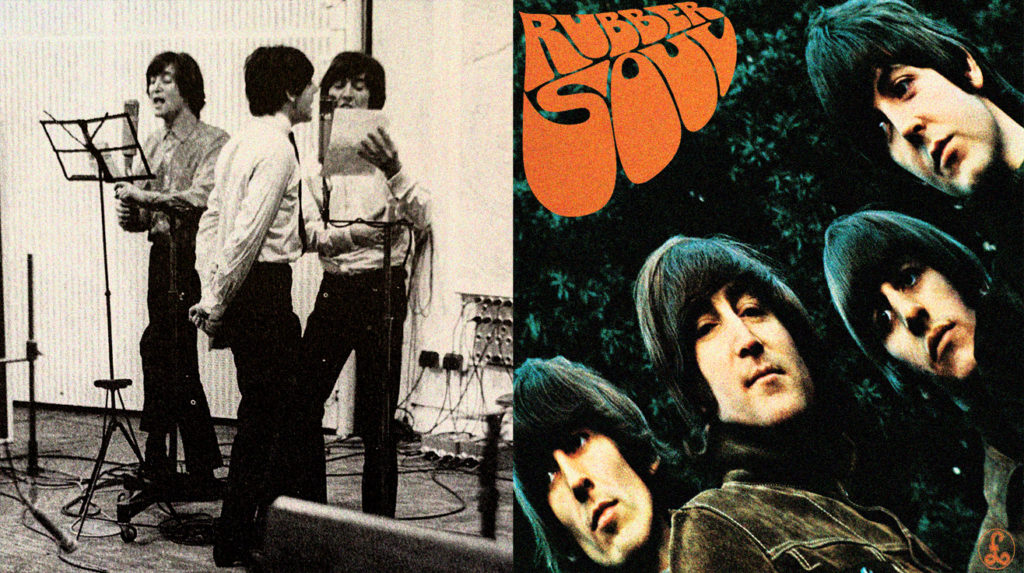
The Beatles completed their artistic transformation in November 1965, delivering an album that fundamentally changed expectations for pop music like an operating system update that adds features you never knew you needed. The record explored relationship complexities and identity questions with unprecedented depth for mainstream artists, establishing new possibilities for lyrical substance. Its consistent quality and artistic vision redefined the album format from commercial product to artistic statement—music’s equivalent to the novel rather than short story collection. Its folk-rock elements and harmonic innovations demonstrated music’s rapid evolution.
1965: A Transformative Year
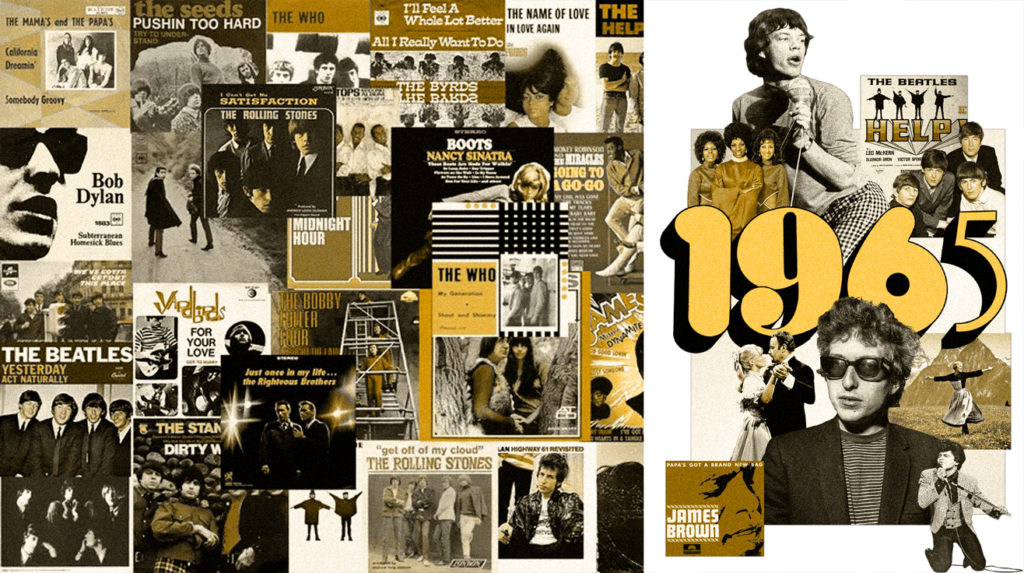
The musical developments of 1965 rewired popular music’s circuitry with the revolutionary impact of switching from dial-up to broadband. The British Invasion peaked while Dylan shattered folk conventions, creating ripple effects still felt in today’s bedroom producers’ work. These transformations spawned multiple new subgenres as traditional boundaries dissolved like sugar in hot coffee. This pivotal year marked the moment when popular music fully embraced its potential as art form rather than entertainment product, setting the template for how we still understand music’s cultural importance.






